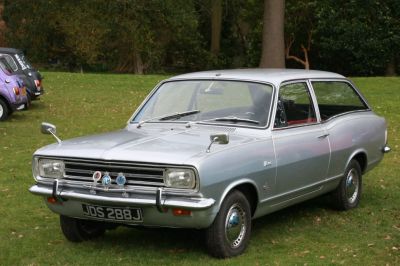 1970 Citroen GS Break Dimensions, Size & Specs
1970 Citroen GS Break Dimensions, Size & SpecsMeasurements of the 1970 Citroen GS Break, engineered for optimal performance and comfort
| Dimensions | |
|---|---|
| Length: | 4120 mm162.2 in13.5 ft |
| Width: | 1608 mm63.3 in5.3 ft |
| Height: | 1349 mm53.1 in4.4 ft |
| Ground Clearance: | 154 mm6.1 in0.5 ft |
| Trunk Capacity: | 645-710 liter22.8-25.1 cu ft |
| Trunk Capacity (Max): | 1500-1510 liter53.0-53.3 cu ft |
| Weight Specifications | |
| Curb Weight: | 900-940 kg1984-2072 lbs |
| Maximal permitted Weight: | 1320-1340 kg2910-2954 lbs |
| Roof Load: | 80 kg176 lbs |
| Tire Specifications | |
| Rims Size: | 15-inch rims:
|
The Citroën GS Break, produced between 1971 and 1979, is a classic French station wagon known for its balanced dimensions and practical design. With an overall length of 4120 mm (162.2 inches), width of 1608 mm (63.3 inches), and a height of 1349 mm (53.1 inches), it combines compact external proportions with spacious interior accommodation. The wheel rims measure 4.5J x 15, contributing to the vehicle's stability and ride quality.
Weighing between 900 to 940 kilograms (1984 to 2072 pounds) when unladen, the GS Break offers a maximum weight capacity ranging from 1320 to 1340 kg (2910 to 2954 pounds). This allows for versatility when transporting passengers and cargo. The station wagon shines in cargo space, providing a generous luggage capacity of 645 to 710 liters (22.8 to 25.1 cubic feet) with the rear seats upright. Folding down the rear seats expands this capacity impressively to between 1500 and 1510 liters (53 to 53.3 cubic feet), making it ideal for larger loads or family trips.
The GS Break maintains a practical roof load limit of 80 kilograms (176 pounds), allowing for additional cargo such as roof boxes or luggage racks without compromising safety. Ground clearance is measured at 154 mm (6.1 inches), offering adequate ride height for typical road conditions and light rural terrain.
Overall, the Citroën GS Break embodies the practicality and innovation characteristic of Citroën's engineering during the 1970s. Its balanced size, efficient weight management, and versatile cargo options make it a timeless choice for enthusiasts of vintage French wagons and compact utility vehicles.
Discover the standout features that make the 1970 Citroen GS Break a leader in its class
Have a question? Please check our knowledgebase first.
The Citroën GS Break station wagon from the model years 1971 to 1979 measures 4120 mm (162.2 inches) in length, 1608 mm (63.3 inches) in width, and has a height of 1349 mm (53.1 inches). These dimensions make it a compact yet practical family estate car of its era, combining moderate external size with optimal use of interior space.
The curb weight of the Citroën GS Break ranges between 900 and 940 kilograms (approximately 1984 to 2072 pounds), depending on the specific trim and equipment. The maximum permissible weight, which includes passengers, cargo, and the vehicle's own mass, is between 1320 and 1340 kilograms (about 2910 to 2954 pounds). This weight balance supports efficient driving dynamics and good fuel economy for the period.
The Citroën GS Break offers a luggage capacity of between 645 and 710 liters (22.8 to 25.1 cubic feet) when the rear seats are in their upright position. This capacity increases significantly to between 1500 and 1510 liters (53 to 53.3 cubic feet) when the rear seats are folded down, providing ample space for bulky items and supporting versatile cargo hauling needs.
Yes, the Citroën GS Break fits comfortably into a standard garage. With a length of 4120 mm (162.2 inches), width of 1608 mm (63.3 inches), and height of 1349 mm (53.1 inches), it is smaller than the typical garage space which often ranges over 6000 mm (236 inches) in length and about 3000 mm (118 inches) in width. This compatibility ensures ease of parking and storage in most residential garages.
The Citroën GS Break features a ride height or ground clearance of 154 mm (6.1 inches), which was fairly standard for compact station wagons in the early 1970s. This clearance offers a good balance between comfortable ride quality and practical usability on uneven or rough roads, without making the vehicle susceptible to undercarriage damage during normal use.
The GS Break is equipped with 15-inch rims sized 4.5J x 15. The wheel size was chosen to offer a stable and smooth ride typical for French family cars of the time, combining reasonable sidewall height on tires for comfort while maintaining sufficient grip and handling for everyday driving needs.
Compared to its predecessors, the GS Break was a modern evolution in Citroën’s lineup during the early 1970s. It featured a more compact footprint at 4120 mm length compared to some earlier larger wagons, but optimized interior design resulted in competitive or superior luggage capacities of up to 1510 liters with seats folded. This improved space efficiency allowed the GS Break to be practical for families seeking a smaller vehicle without sacrificing utility.
When compared with contemporaries like the Peugeot 304 Break and Renault 16 station wagon, the Citroën GS Break is quite competitive in size and luggage space. Its length of 4120 mm places it in the compact to mid-size range, while its cargo capacity of up to 1510 liters with seats folded surpasses some rivals, offering a great blend of maneuverability in urban settings with generous space for cargo and family duties.
The GS Break supports a maximum roof load of 80 kilograms (about 176 pounds). This means owners can install roof racks or carriers for luggage, bicycles, or sporting equipment safely and securely, increasing the vehicle's versatility for trips and outdoor activities without risking structural damage or safety compromises.
The Citroën GS Break is a station wagon variant of the GS series and was produced between 1971 and 1979. Its estate body style offers a spacious and flexible cargo area, making it ideal for families or tradespeople needing extra room. The rear seats fold down to maximize space, combining the driving characteristics of a compact car with the practicality of a wagon.
Discover similar sized cars.

| Production: | 1966-1970 |
|---|---|
| Model Year: | 1966 |
| Length: | 4104 mm161.6 in |
| Width: | 1600 mm63.0 in |
| Height: | 1349 mm53.1 in |
